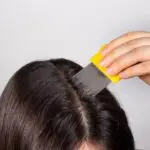Where Does Head Lice First Come From?
In the United States, between six and twelve million new cases of head lice are diagnosed every year. Unfortunately, traditional treatments for head lice aren’t as effective as they once were. The reason is that the lice have developed a resistance to the chemical insecticide pyrethrins.
Infestation of head lice can occur in anyone, but it is most common among children and those in daycare and elementary schools. It can also be transmitted from one person to another through close contact. It can be spread through the sharing of clothing and other objects. Even pets are susceptible to the infection, but they do not contribute to the spread of head lice.
The first sign that you might have a head lice outbreak is a simple examination of your hair. Lice are wingless parasites that live on human hair. They are easily spread by touching another person’s hair. Lice have been known to survive for centuries by feeding on human hosts. In fact, ancient Egyptian burial objects were found to contain lice combs.
Scientists have used DNA from head lice cells to trace the ancestry of the parasites. They found that the two main clades, Clade C and Clade B, separated from each other between 800,000 and one million years ago. This means that the DNA of head lice can give us valuable information about the evolution of humans.







